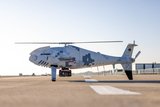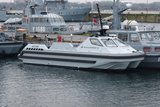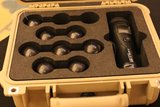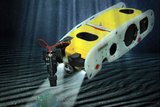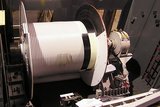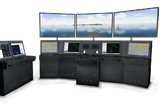US works on underwater UUV recharging
The US Navy is developing ways to use undersea wireless technology for recharging underwater unmanned vehicles (UUVs), with the goal of significantly reducing the time between missions by charging UUV batteries while they are underwater.
UUVs are used for a variety of missions by the navy, including the location and identification of underwater threats such as mines, ocean floor mapping, and optimising remote sensing platforms. The ability to transfer data and energy underwater is expected to multiply the effectiveness of these operations.
Work is currently focused on the development of a vehicle-agnostic method for autonomous underwater energy charging.
A number of demonstrations have been carried out in this field, including the Naval Surface Warfare Center, Carderock Division (NSWCCD) carrying out a successful underwater wireless energy transfer demonstration in a 6,000 gallon tank.
These concepts of wireless underwater energy transfer, such as Forward Deployed Energy and Forward Deployed Energy and Communications Outpost (FDECO), were born in NSWCCD's Disruptive Technologies Lab.
The demonstration used the Naval Undersea Warfare Center-developed Mid-sized Autonomous Research Vehicle (MARV) UUV – a 16.5ft system designed to test different UUV programmes and technologies.
Power was successfully transmitted wirelessly from an underwater docking station to a MARV UUV section, and ultimately to the UUV's battery, which was charged at 2 kilowatts while submerged.
In order to test that the batteries charged to the highest fidelity, a battery State of Charge (SOC) programme was integrated that used algorithms to pull in data from the battery and then run voltage, current and temperature data through the data acquisition system.
Mayer Nelson, NSWCCD technical project manager, said: ‘We want to recharge a battery underwater through wireless technology, and we want to know the batteries charge to the highest fidelity.’
More from UDT Asia 2016 Show News Coverage
-
![German Navy to evaluate ARCIMS]()
German Navy to evaluate ARCIMS
Atlas Elektronik UK has delivered an ARCIMS USV to the German Naval Technical Centre for evaluation, the company announced on 20 January. The equipment is …
-
UDT Asia: Anti-torpedo system worth its SALT
Subsea Asset Location Technologies Ltd (SALT) was showing off an innovative torpedo countermeasure system, which it described as an ‘elegant solution’, at UDT Asia 2016. …
-
![UDT Asia: Saab goes underwater]()
UDT Asia: Saab goes underwater
Saab showcased two UUV designs – the Sea Wasp (pictured above) and MuMNS – during UDT Asia in Singapore. The Sea Wasp is designed to …
-
UDT Asia: OSI busy in Asia-Pacific
OSI Maritime Systems has chalked up a number of recent successes in the Asia-Pacific naval sector. Exhibiting at UDT Asia 2016, the company highlighted that …
-
![UDT Asia 2016: Lightweight sonar system TRAPS subs]()
UDT Asia 2016: Lightweight sonar system TRAPS subs
A new compact and lightweight sonar system designed for smaller surface vessels and unmanned surface vehicles is being developed via collaboration between GeoSpectrum Technologies Inc …
-
![UDT Asia 2016: Image Soft showcases IS UNWAS]()
UDT Asia 2016: Image Soft showcases IS UNWAS
Image Soft, a company based in Helsinki, Finland, will use the UDT Asia 2016 exhibition and conference to launch an upgraded version of a comprehensive …











